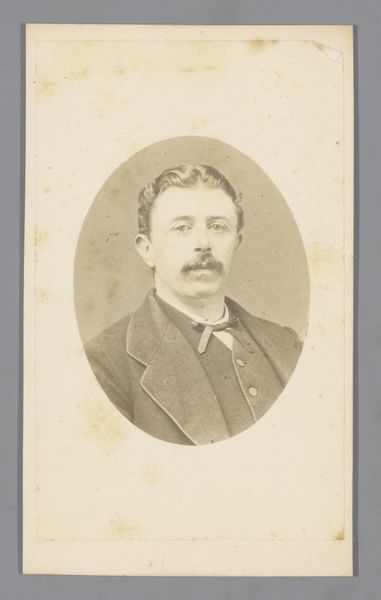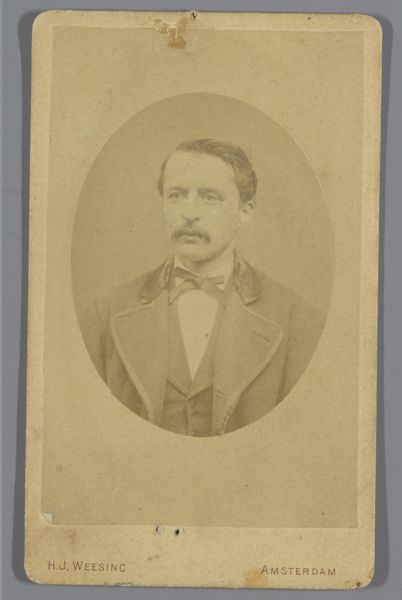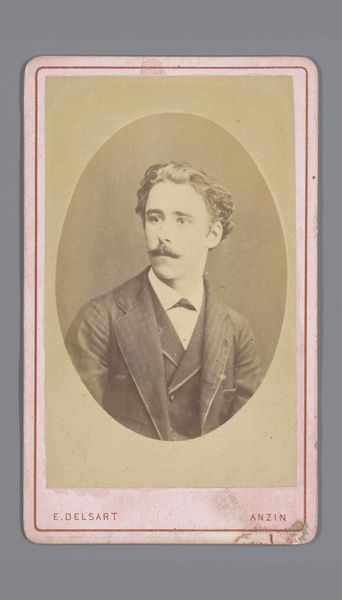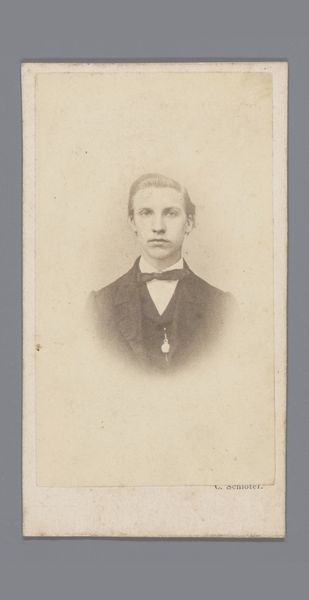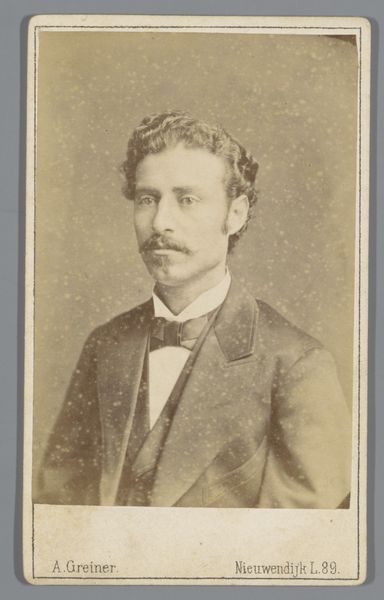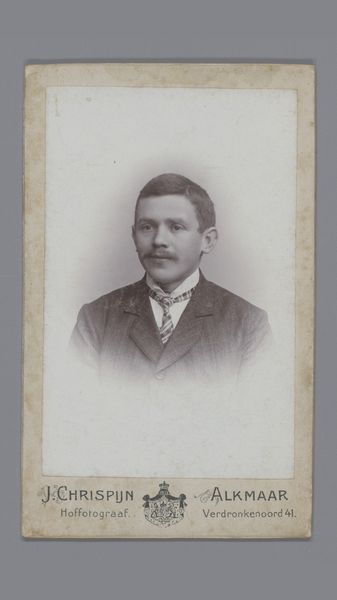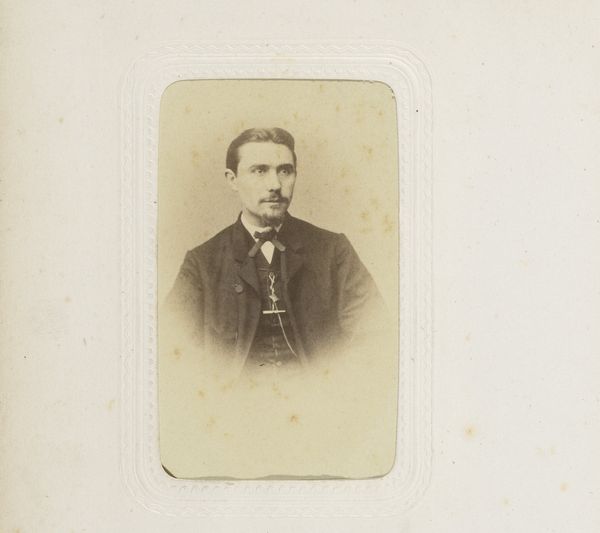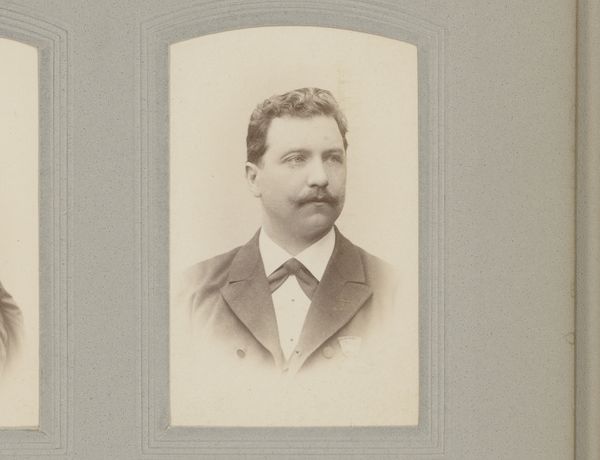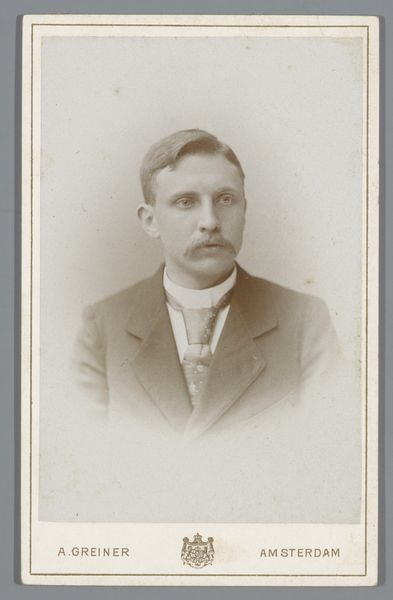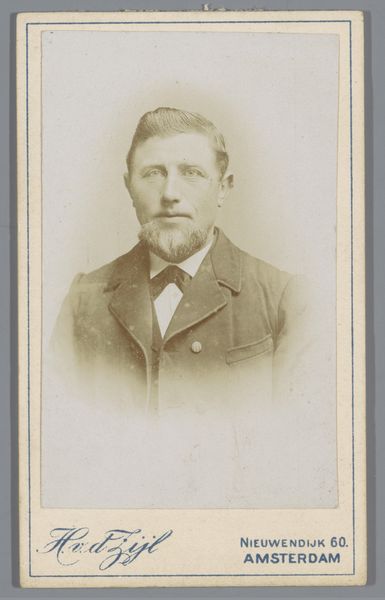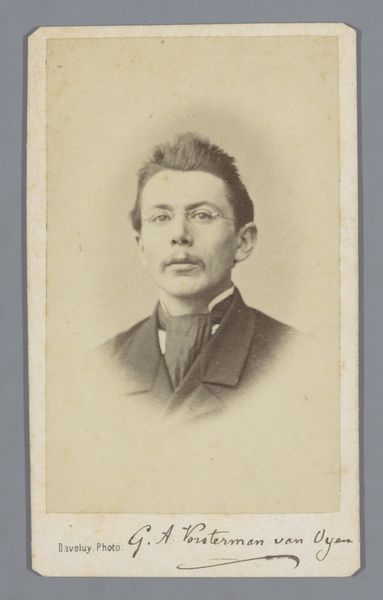
Portret van een onbekende man, mogelijk P.H. Enkelaar, kruidenier in Utrecht 1880 - 1890
0:00
0:00
photography, gelatin-silver-print
#
portrait
#
photography
#
coloured pencil
#
gelatin-silver-print
#
19th century
#
watercolor
#
realism
Dimensions: height 101 mm, width 62 mm
Copyright: Rijks Museum: Open Domain
Editor: This is a really interesting object! It's a portrait, likely from the 1880s, by Lodewijk Hendrikus Serré. The museum catalogue says it is possibly a depiction of a grocer in Utrecht. What strikes me is that it's a photograph, but it has this kind of hazy, almost painted quality. What's your read on it? Curator: What fascinates me is the intersection of photographic technology and the aspiration to create a painted effect. This gelatin-silver print, likely touched with watercolor or coloured pencil, speaks to a period when photography was both documenting reality and trying to emulate established art forms. Consider the labor involved; the photographer as a tradesperson, employing chemical processes to capture an image, then potentially adding hand-applied color, bridging the gap between industrial production and individual craft. Editor: So, it’s less about the sitter as an individual and more about photography establishing its legitimacy as an art form? Curator: Precisely! This portrait is a commodity, produced within a burgeoning market of portraiture. The subject's social class, perhaps implied by the suggestion he's a grocer, highlights the accessibility of photography for the middle class. How did this democratization of portraiture reshape social hierarchies and artistic conventions? Editor: That's a perspective I hadn’t considered. So, by examining the materials and process, we understand the photograph's cultural function beyond simply being a likeness. Curator: Indeed. By considering how these photographic portraits circulated and were consumed, we gain insight into the broader social fabric of the late 19th century and the shifting value placed on representation itself. Editor: It makes you think about how we take and share pictures today. I appreciate you focusing on the craft of it all.
Comments
No comments
Be the first to comment and join the conversation on the ultimate creative platform.
